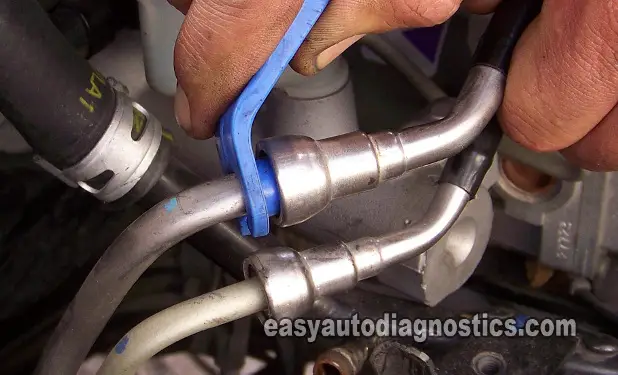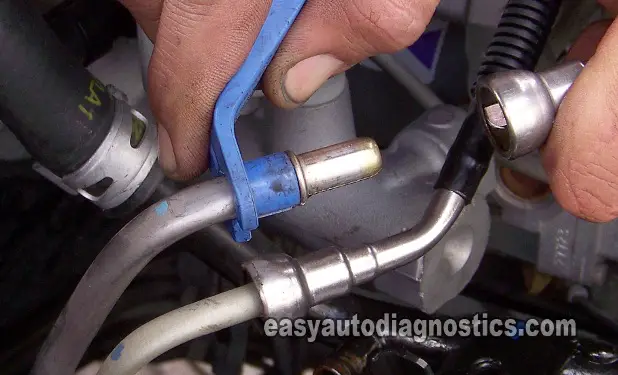It used to be that the metal fuel lines where connected to each other with rubber fuel hoses and hose clamps... boy have times changed! Now, they use a type of fitting called a ‘Quick Disconnect Fitting’ that sometimes is anything but ‘Quick’.
Fuel lines are not the only ones to use this type of fitting since the majority of the domestic vehicle also use this type of fitting to connect A/C lines and hoses. You'll also see this type of fitting connecting the Clutch Fluid feed line at the Clutch Hydraulic Slave Cylinder (if your car or truck has a manual transmission).
The Lisle 39900 Master Disconnect kit is the set of Quick Disconnect Tools I have used pretty much on a daily basis for many years. With them, I've replaced everything ranging from fuel filters to fuel injector rails to air conditioning lines/hoses, so I can tell you they work. Here are a couple of other reasons why I recommend this tool:
- This kit contains the tools for the majority of Quick Disconnect fittings on a modern fuel injected car that uses Quick Disconnect fittings.
- Engine compartments are getting smaller and smaller and where one type of Quick Disconnect tool won't fit or work, the kit will have another that will.
- These tools are durable.
- They're color coded, which makes them easy to see and almost lost-proof.
If you're sold on this tool, you can buy it here: Lisle 39900 Master Disconnect Set.
How To Use A Quick Disconnect Tool
The following ‘how to’ steps apply to disconnecting just about any line or hose that has a Quick Disconnect Coupling, although in the photos I'm demonstrating how to disconnect the fuel lines that connect to the fuel injector rail on a 2001 Chevrolet Impala.
- 1
Before you start, let the engine cool down (if hot) and relieve the fuel pressure in the fuel lines. This is normally done by removing the fuel pump relay or fuel pump fuse and cranking the engine. If you don't know where the fuel pump relay is at, do some research online or in a repair manual.
- 2
Think safety and take all necessary safety precautions... after all, you're dealing with flammable fuel. Wear Safety Glasses whether you're disconnecting a fuel line (or fuel filter) under or in the engine compartment of the car.
- 3
Depending on where the lines you're disconnecting are, place either rags or a catch pan to catch any fuel that may drip/leak out of the disconnected line or lines.
- 4
Choose the right Quick Disconnect Tool from the kit that'll fit snugly around the diameter of the fuel line. Put the tool around the line and push it into the connector until it stops, as shown in photo 1 of 3 of the image viewer.
- 5
Now, gently pull the line, that has the female part of the Quick Disconnect Fitting, back till it disconnects from the male part of the other fuel line it connects to. See photo 2 of 3 and photo 3 of 3.
- 6
To reconnect both Fuel Lines, all you need to do is push them together and then pull them apart (without the Quick Disconnect Tool) to make sure that they are positively connected.
This is a MUST HAVE tool for a lot of the vehicles that are rolling around on pavement today. Something as simple as replacing a Fuel Filter can be impossible without Quick Disconnect Tools. You can buy the Lisle 39900 Master Disconnect kit by clicking on this link: Lisle 39900 Master Disconnect Set.




